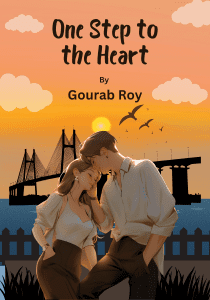William Congreve, one of the foremost dramatists of the Restoration period, is celebrated for his wit, mastery of dialogue, and his deeply intricate plots. Most famously, Congreve’s works like The Way of the World are remembered for their sharp social commentary and comedy. However, The Mourning Bride, first performed in 1697, stands out as a notable divergence from the comedic style that defined much of his career. In this play, Congreve explores the tragic dimensions of love, power, revenge, and human frailty. The Mourning Bride reveals Congreve’s ability to craft a tragic narrative and stands as a reminder of his versatility as a playwright.
This article delves deep into the plot, themes, and characters of The Mourning Bride, offering a comprehensive analysis of the play’s various dimensions. Through a closer examination, the play emerges as a powerful exploration of the tension between political ambition and personal emotion, love and vengeance, and the chaos that ensues when human beings fall victim to their passions.
Summary and Analysis of The Mourning Bride
The plot of The Mourning Bride revolves around the lives of Zara, a captive queen, and Almeria, a princess, both of whom are caught in a web of tragic misunderstandings, political intrigue, and violent passion. At its heart, the play explores how love and ambition intersect, creating a cascade of grief and destruction.
The play opens with Almeria, the daughter of King Manuel of Granada, mourning her separation from her secret husband, Alphonso, whom she believes to be dead. Alphonso, however, is alive, having survived a shipwreck. He has been imprisoned by King Manuel, who does not know his true identity. Almeria’s sorrow dominates the opening scenes as she navigates her perceived loss, and this grief gives the play its title, The Mourning Bride.
Meanwhile, Zara, the captive queen of a conquered African kingdom, is held in Manuel’s court. She harbors a secret passion for Alphonso and a deep resentment towards Manuel for both her captivity and her kingdom’s destruction. Zara embodies an intense, tragic figure consumed by both her desire and her hatred.
As the play unfolds, a series of misunderstandings and deceptions unravel. Alphonso, thought to be dead, escapes from prison with the help of his friend Osman. Zara, unaware that Alphonso has been imprisoned in the same city, assumes that Manuel has ordered his death, igniting a desire for revenge. Her misinterpretation of events leads her to ally herself with conspirators plotting against Manuel. Tragedy strikes when Zara, consumed by her misdirected fury, mistakenly causes the death of Alphonso. Realizing her error too late, Zara falls into despair, leading to her own demise.
The climax of the play centers on the revelation of Alphonso’s identity and the tragic death of both Zara and Manuel, the latter at the hands of his own daughter, Almeria. The play ends in a dark and sorrowful resolution, reinforcing the sense of inescapable fate and human frailty.
Character Analysis in The Mourning Bride
One of the most compelling aspects of The Mourning Bride is its richly drawn characters, each representing a complex mix of desires, flaws, and emotions. Congreve’s skill lies in his ability to craft deeply human characters who, though flawed, remain sympathetic and relatable. Let us consider the primary characters in turn:
- Almeria: As the daughter of King Manuel, Almeria embodies the archetype of the tragic heroine. From the very first scene, she is cast as a figure of mourning and loss. Her love for Alphonso is both her strength and her weakness, driving much of the emotional weight of the play. Almeria’s journey throughout the play reflects the way in which grief and love intertwine, as she mourns her supposed dead husband, only to discover too late that he is still alive. Her sorrow and vulnerability stand in stark contrast to Zara’s fiery passion and desire for revenge, creating a dichotomy between the two female leads.
- Zara: If Almeria is a figure of mourning, Zara is a figure of wrath and ambition. Zara’s character is driven by the twin forces of love and hatred—she is deeply in love with Alphonso, yet consumed by her desire for vengeance against King Manuel. Zara’s tragic flaw lies in her inability to see beyond her own passionate emotions, leading her to misinterpret events and take actions that ultimately lead to her own destruction. Her death is particularly poignant, as it represents the culmination of her inability to reconcile her conflicting emotions.
- Alphonso: As the secret husband of Almeria and the object of Zara’s affections, Alphonso is the key figure around whom much of the action revolves. Though a heroic figure in many respects, Alphonso is also somewhat passive, with much of the plot driven by the actions of the women around him. His survival of the shipwreck and subsequent imprisonment provide the foundation for the play’s central conflict, yet Alphonso himself is often more reactive than proactive in the unfolding tragedy.
- King Manuel: Manuel serves as the play’s central antagonist, though his character is more complex than that of a typical villain. As the king of Granada, he represents the political power and authority that both Zara and Alphonso must contend with. However, Manuel’s downfall is driven as much by his personal failings as by his political decisions. His inability to understand the emotions of those around him, particularly Zara and his own daughter Almeria, leads to his eventual death at the hands of Almeria, in a cruel twist of fate.
Themes in The Mourning Bride
William Congreve’s The Mourning Bride is a rich tapestry of themes that explore the complexities of human relationships, the fragility of life, and the destructive power of passion. Among the most significant themes in the play are love, power, revenge, and the role of fate in human affairs.
- Love and Passion: At the heart of The Mourning Bride is the theme of love, specifically the ways in which love can drive individuals to both great joy and profound sorrow. Almeria’s love for Alphonso is pure and tragic, while Zara’s love is more passionate, bordering on obsession. Congreve explores how love, when combined with other emotions such as grief, jealousy, or ambition, can become a destructive force. This theme resonates throughout the play, shaping the fates of the characters and driving much of the tragic action.
- Power and Ambition: Alongside love, the theme of power is central to the play’s narrative. Both Zara and King Manuel are driven by their desires for power, though their ambitions manifest in different ways. Zara seeks revenge for her lost kingdom, while Manuel’s political authority is ultimately undermined by his inability to see the emotional turmoil around him. The play thus becomes a meditation on the limits of power, particularly when it is wielded without consideration of the human emotions that underpin it.
- Revenge and Vengeance: Revenge is perhaps the most overt theme in The Mourning Bride, driving much of the play’s action. Zara’s quest for vengeance against King Manuel for the destruction of her kingdom and the supposed death of Alphonso leads her to tragic decisions that result in her own demise. Revenge is shown as a blind force that consumes those who pursue it, leaving devastation in its wake.
- Fate and Miscommunication: Throughout the play, fate looms large as a driving force behind the tragic events. The series of misunderstandings and miscommunications that fuel the plot underscore the inevitability of fate and the idea that human beings are often powerless to alter the course of events. Alphonso’s survival, Zara’s mistaken belief in his death, and Almeria’s grief are all shaped by forces beyond the characters’ control, creating a sense of tragic inevitability.
- Grief and Loss: As suggested by the title of the play, grief is another central theme. Almeria’s mourning for her lost husband, Zara’s mourning for her lost kingdom, and the eventual grief that consumes all of the characters in the wake of the tragic events all point to the profound role that loss plays in the human experience. Grief in The Mourning Bride is a transformative force, one that shapes the characters’ decisions and leads them down the path of destruction.
The Language and Structure of The Mourning Bride
One of the most striking aspects of The Mourning Bride is its poetic language. Congreve, known for his sharp wit in his comedies, demonstrates an equal mastery of the elevated, formal language of tragedy. The play’s use of blank verse adds to its sense of grandeur and gravitas, while the occasional rhymed couplets serve to highlight moments of particular significance.
Congreve’s structure in The Mourning Bride is also notable. The play is divided into five acts, following the traditional structure of a classical tragedy. Each act builds upon the previous one, with the tension and stakes escalating as the characters’ fates become more entwined. The use of dramatic irony is particularly effective, as the audience is often aware of truths that the characters themselves do not know, heightening the sense of impending doom.
The Reception and Legacy of The Mourning Bride
The Mourning Bride was an immediate success upon its premiere in 1697, receiving widespread acclaim from both audiences and critics. The play’s blend of high tragedy and complex emotional dynamics resonated with contemporary audiences, and its famous opening line, “Music hath charms to soothe a savage breast,” has since become one of the most quoted lines in English literature.
However, despite its initial success, The Mourning Bride has not maintained the same level of popularity as Congreve’s comedies, particularly The Way of the World. This may be due in part to the shift in theatrical tastes over the centuries, with audiences gravitating more towards Congreve’s witty social comedies than his tragic works.
Nevertheless, The Mourning Bride remains a powerful exploration of human emotion and the tragic consequences of love, power, and revenge. It is a testament to Congreve’s versatility as a playwright and his ability to delve into the darker aspects of human nature.
Conclusion: The Enduring Power of The Mourning Bride
In The Mourning Bride, William Congreve crafted a tragedy that explores the deepest corners of the human heart. Through its richly drawn characters, intricate plot, and powerful themes, the play offers a profound meditation on the ways in which love, grief, ambition, and revenge intersect to shape the course of human lives.
Though it may not be as widely studied or performed as some of Congreve’s other works, The Mourning Bride deserves its place among the great tragedies of English literature. It is a work that resonates with timeless themes, reminding us of the fragility of life and the devastating consequences that can arise when passion and power collide.



